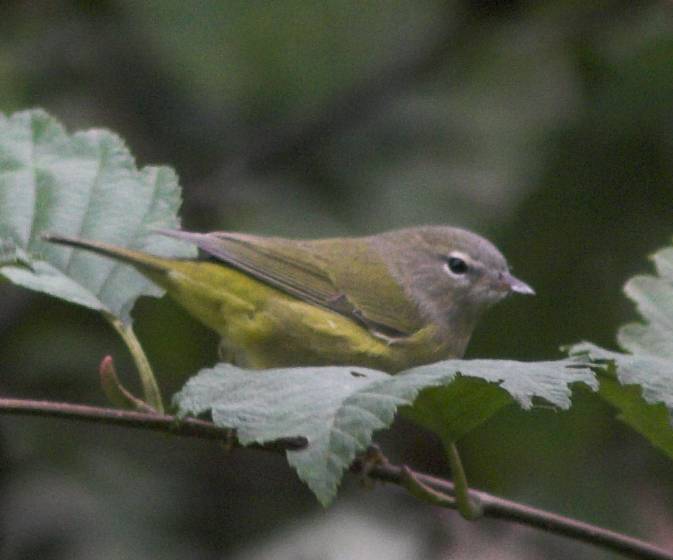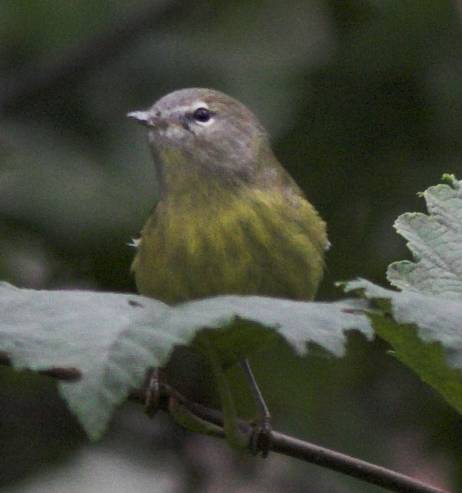
Last fall I photographed a warbler that was flitting about in the neighborhood alders. I was not sure what it was, but at the suggestion of another local bird enthusiast, concluded it was a MacGillivray’s Warbler. Indeed, it does look somewhat like a female MacGillivray’s Warbler with a gray hood and white arcs above and below the eye. Recently, I received a comment that this bird was actually an Orange-crowned Warbler, so I sent a message to the Alaska Birding Yahoo Group to see if I could get some confirmation one way or the other. A few people thought it was a MacGillivray’s Warbler, but I ended up being convinced that it is actually an Orange-crowned Warbler. I have summarized the reasons given by various helpful folks below. (Thanks to folks who helped me out from the Alaska Birding e-mail list).

- although the eye arcs are bold for an Orange-crowned, they not quite as thick and strong as those on a MacGillivray’s.
- the breast streaking is typical of Orange-crowned and is not found on MacGillivray’s.
- the yellowish throat is typical of Orange-crowned and not MacGillivray’s (gray or whitish throat).
- there is no gray upper breast that is typical of MacGillivray’s Warbler.
- the dingy greenish-yellow underparts (particularly undertail coverts) are typical of Orange-crowned. A MacGillivray’s would be much brighter yellow
- the a dark bill correct for an Orange-crowned, but not MacGillivray’s (lower bill would be pinkish).
- the dark legs are consistent with Orange-crowned. Those in the genus Oporornis, including MacGillivray’s, have pink legs.
Thanks again to all those who contributed to my better understanding of warbler identification.